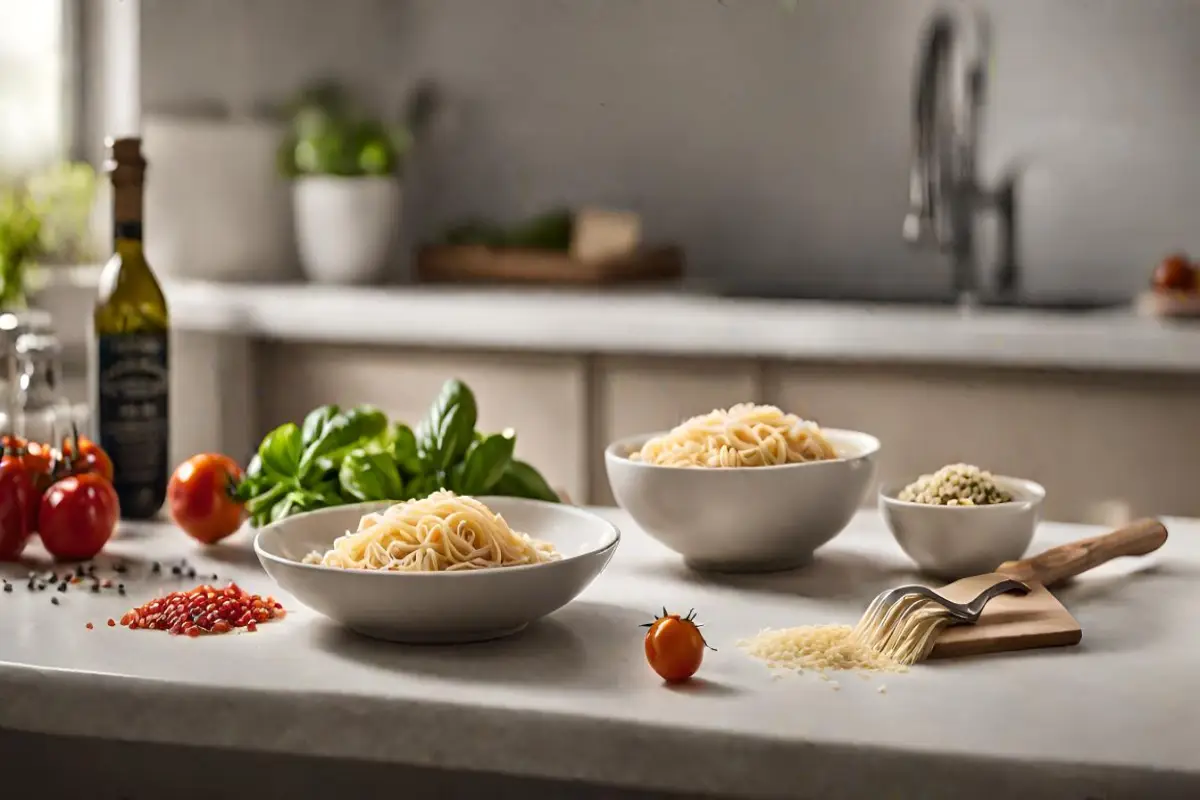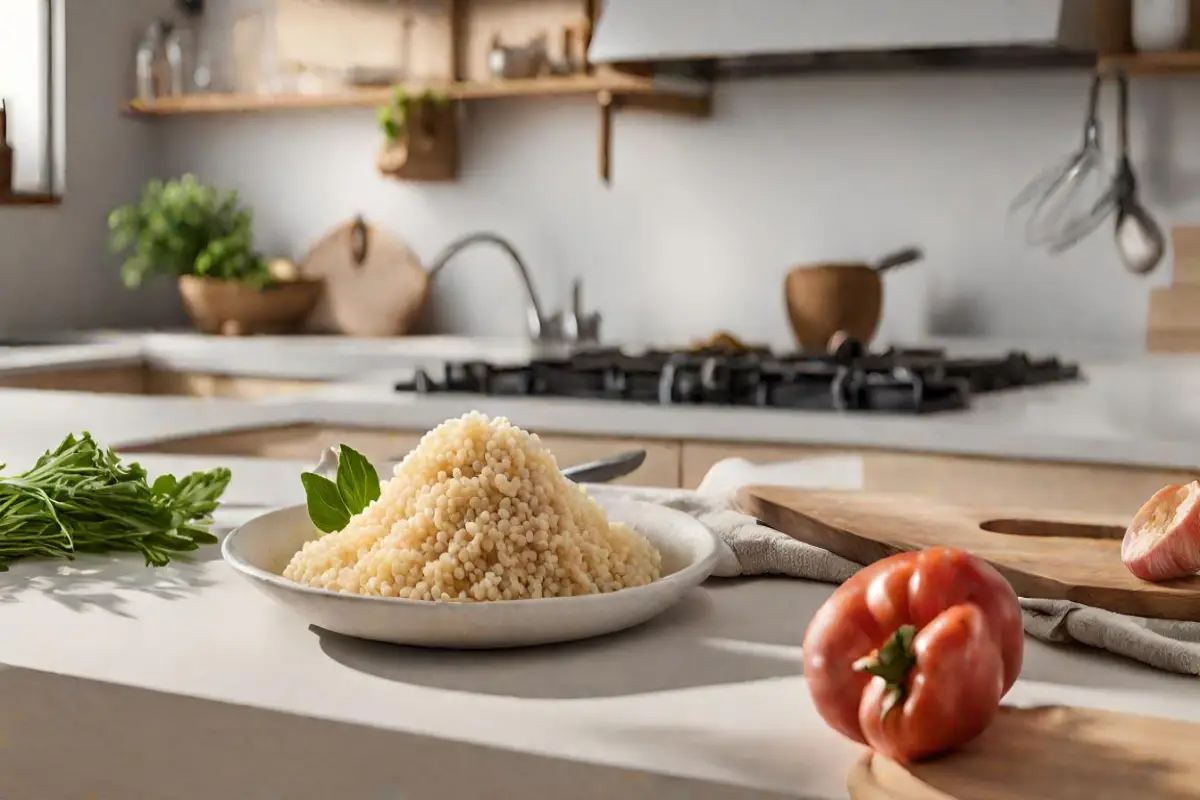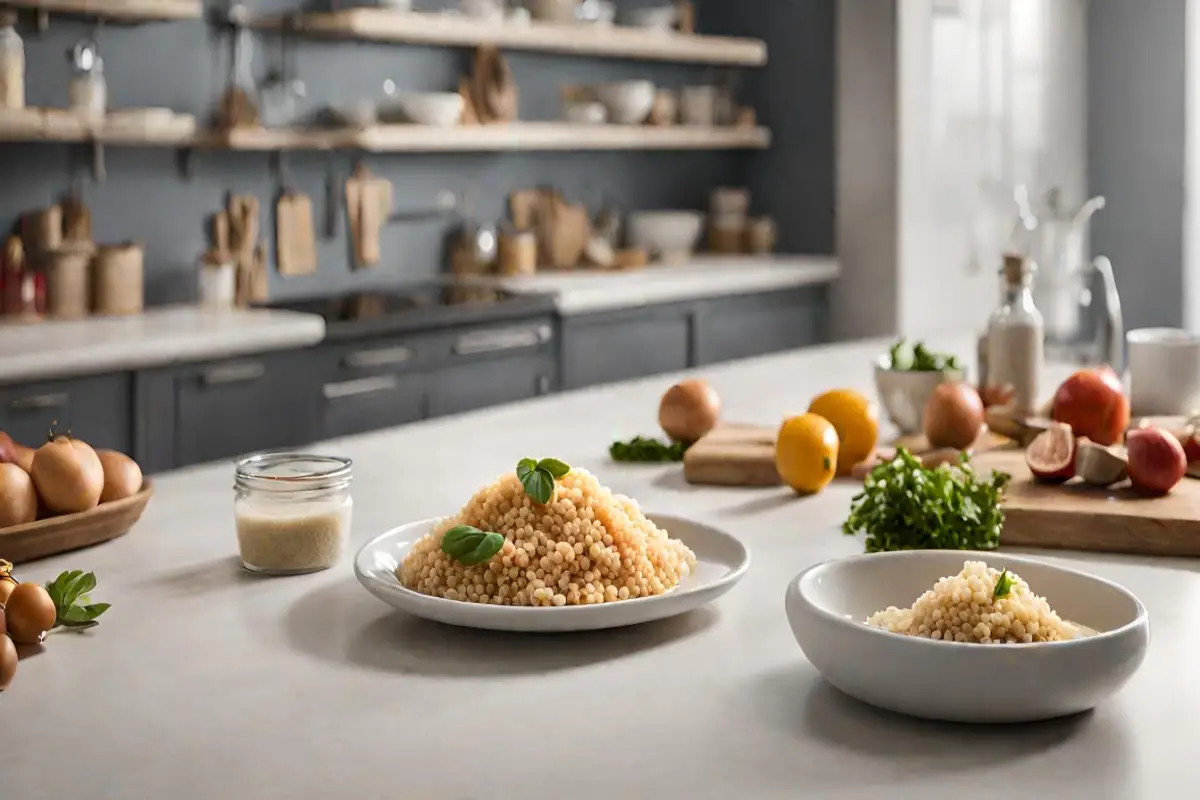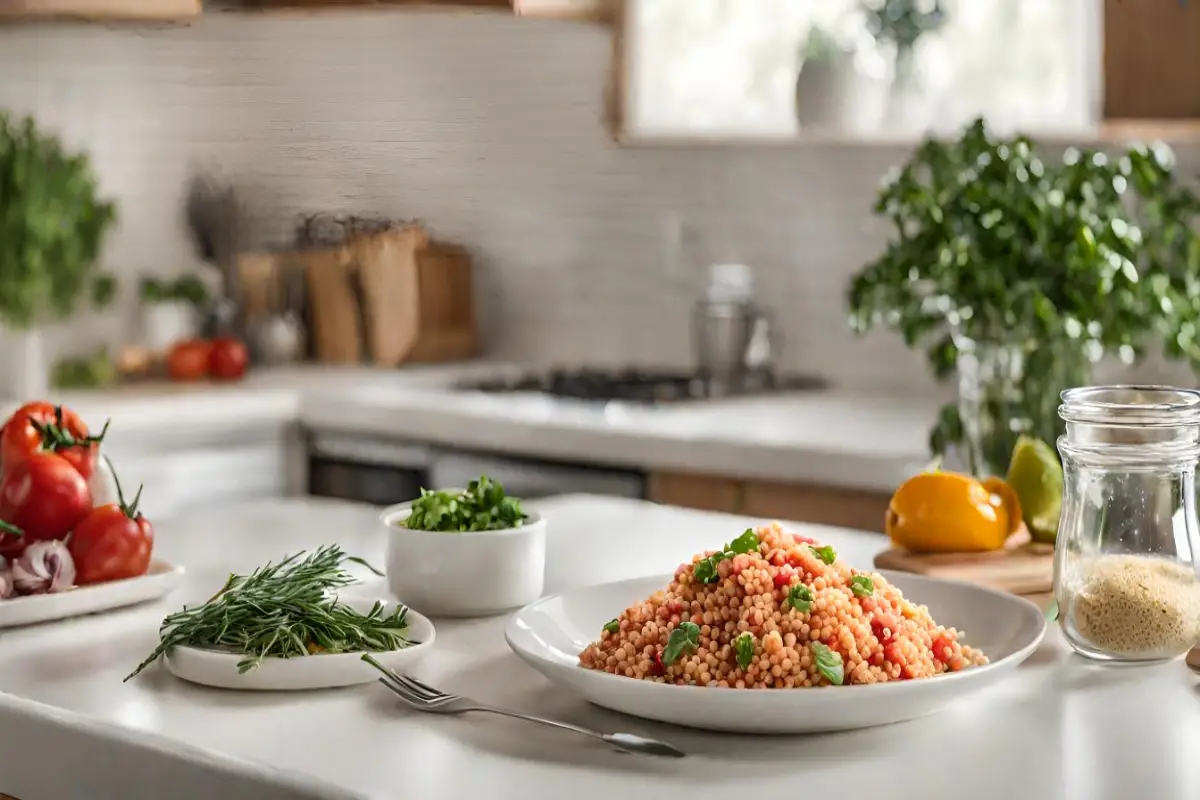“Is Pastina a healing food?” This question opens a fascinating exploration into the health benefits of pastina. This tiny, star-shaped pasta is a cherished comfort food for many. It brings back warm memories of family and home-cooked meals. But pastina offers more than just sentimental value.
In this article, we will delve into the nutritious world of pastina. What makes it a popular choice during illness? How does it stack up nutritionally? We aim to answer these questions and more. We’ll compare pastina to other healing foods, offer easy recipes, and share insights from health experts.
Whether you’re looking for a comforting meal option during recovery or just curious about pastina, you’re in the right place. We’ll share engaging stories, debunk common myths, and explore how to integrate pastina into a healthy diet. Let’s embark on this journey to discover the true healing potential of pastina.
What is Pastina? A Deep Dive into its Essence
Origins and Definition
“Is Pastina a healing food?” To answer this, we first explore what pastina is. This tiny pasta has its roots in Italian cuisine. Its name, ‘pastina,’ translates to “little pasta.” Usually shaped like stars or grains of rice, pastina is a favorite among both children and adults.
Composition and Cooking
Pastina’s simple composition is key to its appeal. It’s typically made from wheat flour and is often nutrient-enriched with elements like iron and B vitamins. Quick to cook and easy to digest, its soft texture is perfect for those with sensitive stomachs. This makes pastina an ideal choice in times of illness or when seeking gentle nourishment.
Cultural Significance
In various cultures, pastina transcends its role as mere food. It symbolizes care and comfort. Commonly added to soups and broths, pastina absorbs flavors well, offering a soothing, easy-to-eat option. Its combination of gentleness and nutrition lends it potential healing qualities, especially valuable during recovery periods.
With this understanding of pastina, we’re now poised to explore its potential healing benefits and how it aids those in recovery.
Is Pastina a Healing Food? Uncovering the Health Benefits
Nutritional Profile
When we question, “Is Pastina a healing food?”, it’s important to start with its nutritional value. Despite its small size, pastina is rich in essential nutrients. It primarily offers carbohydrates, which are crucial for energy. Moreover, when enriched, pastina includes important vitamins, such as B vitamins, and minerals like iron. These nutrients play a key role in recovery and maintaining overall health.
Digestive Ease and Comfort
Furthermore, one of the standout qualities of pastina is its digestibility. Its soft texture and quick cooking time make it an excellent option for those with sensitive stomachs or reduced appetites, which are often issues during illness. This gentle nature allows for easy nourishment without straining the digestive system, thus making it a comforting choice for many.
Immune Support and Recovery
Additionally, while pastina doesn’t directly cure ailments, its nutritional makeup supports the body’s healing processes. The energy provided by carbohydrates, along with essential nutrients, helps in maintaining strength. This support is essential for the immune system, especially when the body is recuperating from sickness or stress.
Through examining its nutritional benefits, ease of digestion, and role in supporting recovery, pastina proves to be a potentially healing food. It’s not just comforting but also packed with nutrition, making it a valuable part of a diet geared towards recovery.
In the following section, we will delve into how pastina is used in traditional healing practices across different cultures.
Cultural Perspectives: Pastina as a Traditional Healing Meal
Pastina in Global Traditions
Around the world, many cultures have embraced pastina as a healing food. In Italy, for instance, pastina is not just a staple; it’s a symbol of care and comfort, especially in times of illness. Similarly, other cultures have their versions of small, easily digestible pasta or grains used in healing meals. This universal appeal speaks volumes about its perceived restorative powers.
A Symbol of Nurturing and Recovery
Besides its nutritional benefits, pastina plays a significant role in emotional and psychological healing. Often, it’s one of the first foods offered to someone recovering from illness, symbolizing nurturing and care. This emotional aspect of healing is as crucial as the physical, and pastina often stands at the crossroads of both.
Variations and Uses in Healing Recipes
Additionally, across different cultures, pastina is used in various healing recipes. From simple broths in Italy to comforting soups in other parts of the world, pastina adapts to local tastes while maintaining its core role as a gentle, healing food. These recipes often include other ingredients known for their healing properties, like ginger, garlic, or chicken broth, enhancing pastina’s restorative effect.
Exploring the cultural significance of pastina highlights its role not just as a food item but as a beacon of comfort and healing across different societies. This global perspective enriches our understanding of why pastina is considered a healing food.
Comparing Pastina with Other Comfort Foods for Healing
Pastina vs. Other Comfort Foods
“Is Pastina a healing food?” gains more perspective when we compare it to other comfort foods like chicken soup, rice porridge, and toast. These foods, renowned for their stomach-friendly qualities, offer warmth and comfort, much like pastina.
Nutritional Comparison
Nutrition-wise, pastina competes well with these options. It provides quick energy thanks to its simple carbohydrates, similar to rice porridge in texture and digestibility. Enriched pastina, with added vitamins and minerals, often surpasses these foods in nutritional value.
Ease of Preparation and Consumption
Another key advantage of pastina lies in its ease of preparation. You can cook pastina quickly and effortlessly, which is a blessing when energy is low. Its soft texture also makes it an ideal choice for those with a sore throat or reduced appetite.
Emotional and Psychological Comfort
Moreover, the emotional and psychological comfort pastina offers is unparalleled. Its association with childhood and caregiving brings a sense of wellbeing and security, crucial for healing.
Pastina, therefore, stands out not just for its nutritional value but also for the emotional and psychological comfort it offers, making it a competitive option among traditional healing foods.
Continuing to the next section, we’ll delve into some healing pastina recipes:
Healing Recipes: Preparing Pastina for Recovery and Comfort
Simple Pastina Soup for Comfort
A classic pastina recipe is the comforting pastina soup. You just need a handful of ingredients: pastina, broth (chicken or vegetable), a bit of butter, and grated cheese. Boil the pastina in the broth until tender, then stir in the butter and cheese for a creamy, soothing soup. It’s not only easy on the stomach but also nourishing and warming.
Pastina Porridge for Easy Digestion
Another healing recipe is pastina porridge. Mix cooked pastina with a little milk or almond milk, a hint of honey, and a sprinkle of cinnamon. This porridge is gentle and easy to digest, making it an excellent choice for breakfast or a light meal during recovery.
Energizing Pastina with Vegetables
For a more substantial meal, try pastina with sautéed vegetables. Cook the pastina, then toss it with lightly sautéed vegetables like carrots, zucchini, and spinach. This meal is not only easy to prepare but also packed with vitamins and minerals, providing an energy boost during recovery.
Personalizing Pastina Dishes
Remember, the beauty of pastina lies in its versatility. Feel free to adapt these recipes to suit your dietary needs or preferences. Whether it’s adding a protein source or using different vegetables, pastina can accommodate various ingredients while still providing comfort and nourishment.
These recipes showcase pastina’s role as a healing food, offering both physical nourishment and emotional comfort. They’re easy to prepare, digest, and can be tailored to individual tastes and dietary requirements.
Medical Insights: Is Pastina a Viable Option for Healing Diets?
Expert Views on Pastina’s Nutritional Value
Health professionals often recommend easily digestible foods during recovery, and pastina frequently makes the list. Dietitians note its high carbohydrate content, which provides quick energy. When enriched, pastina also supplies essential nutrients like B vitamins and iron. These components are crucial during healing, as they support overall health and recovery.
Pastina in Digestive Health
Gastroenterologists highlight pastina’s role in digestive health, especially during illness, as it can aid in digestive health. Its soft texture and ease of digestion make it a go-to food for patients with stomach ailments or reduced appetite. It’s gentle on the digestive system, providing sustenance without causing discomfort.
Pediatricians’ Recommendations
Pediatricians often recommend pastina for children, particularly when they are unwell. Its small size and soft texture make it suitable for young palates. Plus, its simplicity allows parents to incorporate other healing ingredients, like broth or vegetables, enhancing its nutritional profile.
Integrating Pastina into a Balanced Diet
Nutritionists emphasize the importance of balance in a healing diet. While pastina is beneficial, it should be part of a varied diet that includes proteins, fruits, and vegetables. This approach ensures a comprehensive intake of all necessary nutrients for optimal recovery.
These insights from health experts validate pastina’s role in a healing diet. It’s not just a source of comfort but also a nutritionally sound choice, particularly during recovery periods.
Testimonials: Personal Experiences with Pastina as a Healing Food
Comforting Childhood Memories
Many people recall pastina as a staple during their childhood illnesses. These testimonials often reflect on how a bowl of warm pastina soup brought not only physical comfort but also emotional warmth. It’s a common theme that pastina is intertwined with memories of care and nurturing from loved ones.
Recovery Stories
Several individuals share stories of turning to pastina during recovery from surgery or illness. Its ease of digestion and soothing texture made it an ideal food choice when other foods were hard to stomach. These personal experiences highlight pastina’s role in providing strength and comfort during challenging times.
Pastina in Family Traditions
Families across cultures share how pastina has been passed down through generations as a healing food. Whether it’s a simple pastina and butter dish or a more elaborate soup, these recipes hold sentimental value and are a testament to pastina’s enduring appeal as a comfort food.
A Source of Nourishment in Difficult Times
In times of stress or illness, many find solace in the simplicity of pastina. Its quick and easy preparation makes it a practical option for those with limited energy or resources, offering sustenance and a sense of normalcy during difficult periods.
These personal stories and testimonials add a human touch to the narrative, illustrating pastina’s impact as more than just food – it’s a source of healing, comfort, and tradition.
Fact vs Fiction: Debunking Myths About Pastina’s Healing Properties
Myth: Pastina Can Cure Illnesses
A common misconception is that pastina has curative powers. While it’s a nutritious and comforting food, it’s not a medicine and does not cure diseases. Its role in a healing diet is to provide easy-to-digest nourishment and support overall health, not to act as a treatment for medical conditions.
Fact: Pastina Aids in Digestive Health
It’s true that pastina can aid in digestive health. Its simplicity and soft texture make it an excellent food choice for those with digestive issues or a compromised appetite. This makes it an ideal component of a diet for recovery, particularly from stomach ailments.
Myth: Pastina is Only for Children
Another myth is that pastina is suitable only for children. While it’s popular among kids due to its size and texture, adults can also benefit from its nutritional value and ease of digestion. Pastina is a versatile food that people of all ages can enjoy, especially during times of recovery.
Fact: Pastina is Nutrient-Rich
Indeed, pastina can be a nutrient-rich food. Especially when enriched, it can provide essential vitamins and minerals like B vitamins and iron. These nutrients are important for maintaining energy and supporting the body’s recovery processes.
By clarifying these myths and facts, we gain a more accurate understanding of pastina’s role in healing and nutrition. It’s a food that offers comfort, nourishment, and a sense of wellbeing, making it a valuable addition to any diet, especially during times of healing.
FAQs: Understanding Pastina’s Role in Healing
Is Pastina Good When You’re Sick?
Yes, pastina is a good choice when you’re sick. Its soft texture and easy digestibility make it gentle on the stomach, ideal for those with reduced appetites or digestive issues during illness. Plus, it provides carbohydrates for energy and, when enriched, essential nutrients.
Why Does Pastina Make Me Feel Better?
Pastina often makes people feel better due to its comforting nature and nutritional value. It’s easy to digest, which helps when your stomach is sensitive. The emotional aspect — its association with care and comfort from childhood — also plays a role in its soothing effect.
Is Pastina Good for an Upset Stomach?
Yes, pastina is suitable for an upset stomach. Its simplicity and softness make it one of the best foods for easy digestion. It’s nourishing without being heavy, which is perfect for times when your stomach is unsettled.
What is the Meaning of Pastina?
Pastina, derived from the Italian word for “pasta,” literally means “little pasta.” It refers to the smallest type of pasta available, often used in soups and broths. Pastina is not just a food item; it’s a symbol of comfort and nurturing in many cultures.
Conclusion: Embracing Pastina as a Healing Comfort Food
In our exploration of “Is Pastina a healing food?”, we’ve journeyed through its nutritional benefits, cultural significance, and comforting recipes. Pastina, with its simple composition and nurturing connotations, emerges as more than just a meal; it’s a source of comfort and recovery, especially during times of illness.
While it’s important to remember that pastina is not a cure for ailments, its role in providing nourishment and comfort during recovery is undeniable. From its ease of digestion to its potential nutrient richness, pastina serves as a gentle ally in maintaining health and well-being.
Whether enjoyed in a warm bowl of soup, as a soothing porridge, or in a nourishing meal with vegetables, pastina offers versatility, simplicity, and comfort. It’s a testament to how the simplest foods often hold the greatest power in bringing us back to health and making us feel cared for.
As we conclude, let’s appreciate pastina not just as a food but as a symbol of healing and comfort. It reminds us that sometimes, the most humble ingredients in our kitchen can be the most powerful in supporting our health and recovery.





